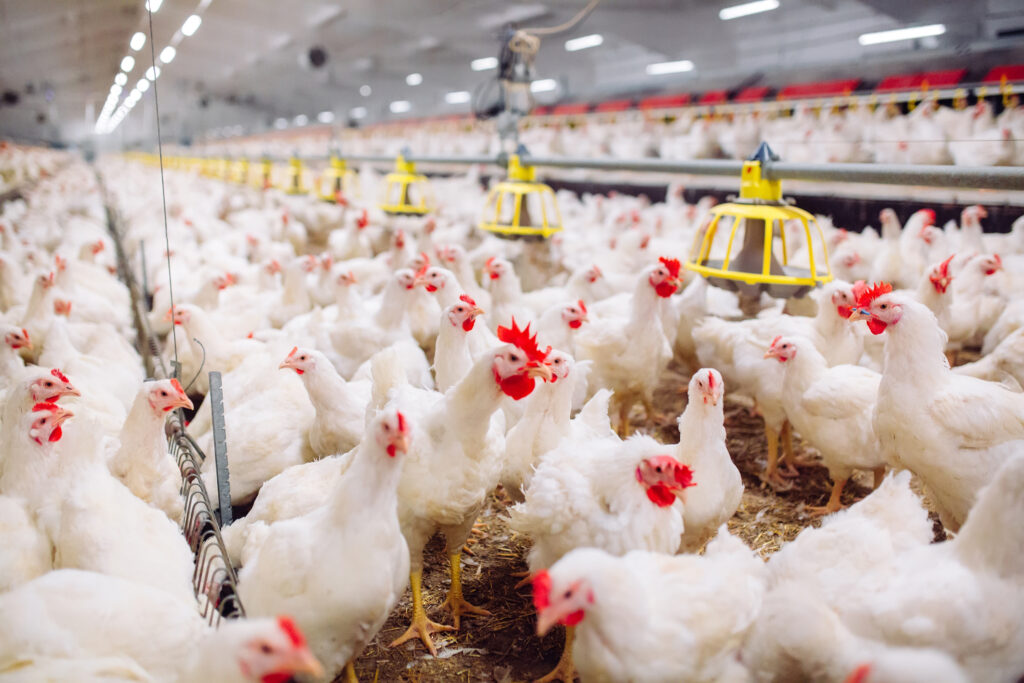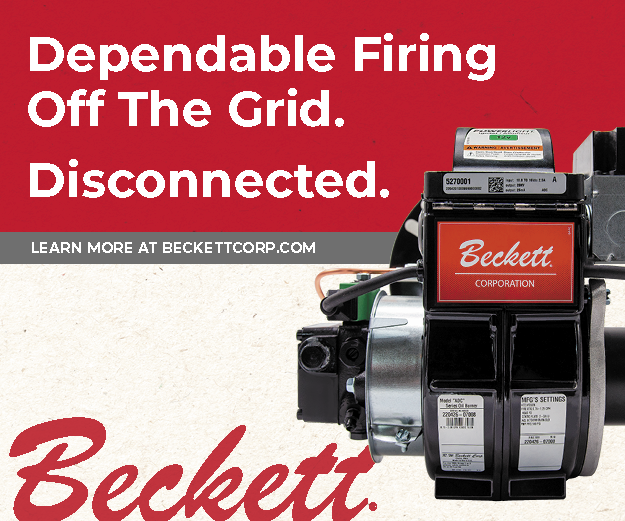
Power Washer’s Guidebook: Agriculture—Cleaning Poultry Houses, Part I
By Terri Perrin / Published December 2023

Editor’s Note: This article- Agriculture-Cleaning Poultry Houses – will be published in two parts. Part II will pick up with a discussion of chemical usage and disease prevention.
Food For Thought
From small family farms to massive corporately owned operations, America is home to a thriving poultry production industry. The National Chicken Council (NCC) provides a long list of statistics relating to chicken production, consumption, and exportation, some of which we share here.
According to the NCC, in 2022:
- The USA produced 9.165 billion broilers (meat birds) weighing 59.348 billion pounds liveweight.
- The USA has the largest broiler chicken industry in the world, with about 16 percent of production exported to other countries and is the second leading broiler exporter in the world, behind Brazil.
- Americans consume more chicken than anyone else in the world—100.6 pounds per capita—and chicken is the number one protein consumed in the United States.
The U.S. Poultry and Egg Association and other national associations have similar statistics. These facts are proof positive that there are amazing opportunities for pressure washing contractors to profit in the agricultural sector, particularly within the poultry industry, which has stringent guidelines relating to the regular sanitation and cleanliness of poultry houses.
Geographical Considerations
Large-scale poultry production is carried out in almost every state across the nation but is most lucrative, from a pressure washer’s perspective, in the NCC’s list of “Top 20” broiler producing states (in order of top production by the pound):
- North Carolina
- Georgia
- Arkansas
- Alabama
- Texas
- Mississippi
- Virginia
- South Carolina
- Delaware
- Missouri
- Maryland
- Kentucky
- Oklahoma
- Pennsylvania
- Tennessee
- Ohio
- Florida
- West Virginia
- Minnesota
- Other states (combined)
Typical Job, No “Typical” Poultry Barn
The first thing to note is that commercial poultry houses (barns) are BIG! They can be 100–600 feet long and range from 25–45-plus feet wide. But, before we delve into pressure washing opportunities, we need to understand that there are two main types of poultry production, each having different set up and cleaning requirements.
Broiler houses are for chickens raised for their meat and, typically, are free run, with no need for roosts, nesting boxes, or egg collection facilities.
Layer hen houses are for chickens raised to produce eggs. Layers may be kept in cages or free run. There is much more to the design, technology, and maintenance of equipment of a laying house.
Both types of chicken houses will have automatic watering, heating, feeding, air circulation, and lighting systems. And both will typically have solid walls—with no windows—relying instead on a specialized air filtration system for lighting, heating, and cooling. Evaporative cool cells are located on one end of the house; and, on the other end, there are multiple 40- to 50-inch tunnel fans. The fans are used to pull fresh air in through the cool cells and result in significant air flow. Dust and debris are picked up because of the air flow, and the fans get extremely dirty. Other components that may need washing include infrared brooder lights (used to keep baby chicks warm), stir fans, water lines, feed and water troughs, and side wall vents.
“The efficiency-minded poultry grower wants tunnel fans cleaned with the introduction of each new flock, especially when air speed certification is done,” explains Brad Frost the owner of Sud n Clean Power Washing in Arkadelphia, AR. “In broiler production new flocks are generally placed every 10 weeks. They grow from day old chicks to selling weight in seven to eight weeks. Repeat customers guarantee you year-round business opportunities.”
Growers also, on occasion, need the entire inside of the house washed, including the walls and ceiling. This is referred to as a “wash down.” Rarely is this service requested more than once a year.
Techniques & Equipment
In most cases, the poultry producer will use a bobcat (or similar machine) to clear the floor of the chicken house of “litter” prior to your scheduled wash down. Litter is the accumulation of chicken droppings, feathers, food waste, etc. Never attempt to pressure wash a chicken house that still has a thick accumulation of litter as it would turn into “chicken poop soup!”
Also, understand that broiler houses are much different than layer houses. This article focuses on broiler houses. Be aware that you may need extra equipment to pressure wash a laying hen operation.
Start With PPE
To protect your clothing from overspray and to ensure that you can safely move from barn to barn, or farm to farm, without the risk of cross contamination, it is imperative that you wear the appropriate PPE. You will need tall rubber boots; at least two sets of rain suits and a couple of changes of clothing; a face shield and/or an N95 medical mask; and rubber (waterproof) gloves.
“I have not heard of any instances where a pressure washing contractor has gotten sick from cleaning poultry houses, but it could happen,” remarks Frost. “Generally speaking, I find that the water we use keeps the dust from flying, so that isn’t a big issue. I do wear a rain suit to keep clean. Even with the rain suit, your clothes can get soaked and skin chafing becomes a problem. (That’s so uncomfortable!) I personally recommend the Frogg Toggs brand of waterproof suits, rather than rubber or PVC-based suits.”
Frost stresses that you should choose your boots for comfort because you will be wearing them all day long and, to avoid soaked socks, your rain suit pants must fit over the top of your boots. Frost recommends that you “suit up like a fireman” by setting up your boots on the floor, with pant legs secured over the boot tops in advance, and then step into the boots and pull the pants up. This method is very practical and easy and prolongs the life of the pants.
There should also be a “control room” at the entrance of every poultry house. This is where you can change your clothes and hose down your boots and rain suit before going home or moving to the next farm. Frost says that due to the size of the barns and the time it takes to clean each one, he has seldom, if ever, gone to two different farms in the same day. It can take all day or several days to clean one poultry farm.
Rate of Flow and Equipment
You will need a high gpm pump for whole house wash downs, while a low gpm pump for components inside the house is sufficient. Frost also recommends 300-plus feet of pressure hose and 150 to 200 feet of supply hose; an 18-inch lance gun; whip-hose with swivel; and various nozzles—X-jet and turbo nozzle.
“The conventional wisdom that ‘rate of flow is the key’ to successful cleaning of poultry houses—10+ gpm pumps running at 1,000 psi— is generally correct for whole house wash downs,” says Frost. He adds, “But there are components installed in poultry houses in which lower gpm units work better. Lower gpm pumps are needed for many styles of brooders (lights) and stir fans as high-water flow tends to wreak havoc with more sensitive equipment. Lower gpm pumps are preferred when cleaning tunnel fans, due to the use of plastic parts and electric motors. Even with the lower gpm, one still has the versatility to swap out nozzles to suit the surface being washed.”
When washing fans, Frost advises the use of an M-5 X-Jet nozzle coupled to a minimum 4 gpm, 4,000 psi pump, to allow the wash technician to vary the spray width from wide to pinpoint.
“On the fan louvers,” adds Frost, “it’s best to use a wide spray width as most of them are plastic, and they are easily broken by high pressure. When cleaning tunnel fans, the short lance allows the contract cleaner to manipulate the louvers with one hand while operating the wand with the other hand. Keep in mind, while a large orifice X-Jet generally produces a lower pressure spray, other nozzles are high pressure. Use caution when working with a short lance. Some of the surfaces on the fan box get especially dirty, and from time to time, a rotary nozzle is required. Again, the short lance allows you to get to all the surfaces in and around the area.
“Generally speaking, it can take all day, or several days, to clean some of these massive barns,” explains Frost. “I’ve gone exclusively to just washing tunnel fans. Repeat business keeps me booked and busy. A complete wash down is extensive, and you need to have high volume equipment to do that. If you wash the fans or smaller components, anywhere from four to eight gallons a minute is fine for that. Start with a smaller pressure washer to wash fans before venturing into the 10 to 12 gallon per minute, necessary for the wash down.”
Although one technician can do this work by himself or herself, it is advantageous to have two people. As one person works on components with a low gpm pump, the other person can focus on walls and ceiling surfaces with a high gpm pump.
Water Supply
Frost says that he has never had to supply water when serving poultry farms. Producers require a huge amount of water to supply their chicken houses. In some regions there have been expansions in rural water supply, with city water piped out to all residences (and farms) in an area. Some farms have both natural wells and rural water. Be aware of what type of water you will be using. Well water per gallon is, of course, cheaper for the farmer, but it may have hard minerals and sediments that can clog filters and damage your equipment.
“I discuss water sources with my customers in advance and advise that I prefer not to use well water,” confirms Frost. “Even though I have a filter system, I risk having a tank full of water with sediment, so I try to avoid that.”
Water Temperature
While hot water does a great job, it complicates the work by building up steam in the confined space you are working in. It gets to the point that you can’t see what you are doing.
“I rarely use hot water in poultry houses because of the steam,” Frost adds. “Sometimes, in the dead of winter, I may use hot water at about 100℉ to 120℉. That little shock of temperature difference helps to keep my hoses running clear. That said, I do not wash in temperatures below freezing. Some service providers do, but I don’t.”
Wastewater
Almost all poultry houses in Frost’s region have clay floors, and the wastewater is allowed to evaporate or soak into the floor. However, if working with any type of floor surface in a poultry house, be aware that there are no drains in them, so excess water is flushed out the large barn doors and does not enter a sewage system. Normally, chicken farms are situated on several acres, so wastewater is absorbed into the substrate surrounding the barns. And, as with any cleaning contract, be conscientious that wastewater doesn’t enter a natural waterbody such as a creek or pond.
“Clearing the wash water out of the poultry barn [for a whole house wash down] is not an easy task,” adds Scott Fessler, owner of Paradise Power Washing, Wichita, KS. “Since there are no floor drains, you need a team of workers … a couple on the power washing equipment and three or four others using large squeegees to push the dirty water out the main barn doors. It’s hard work.”
Pressure Washer’s Guidebook
For more content like this, be sure to check out our Pressure Washer’s Guidebook. This resource is available in both print and digital formats and contains over 50 chapters, a chemical glossary, and a marketing glossary for the contract cleaners. The PWG also includes 16 chapters devoted to help you in a very detailed manner to market your business followed by more than 25 chapters written by contract cleaners, providing tips on the typical job, techniques that work best, how to bill, how to fix mistakes, and more.





